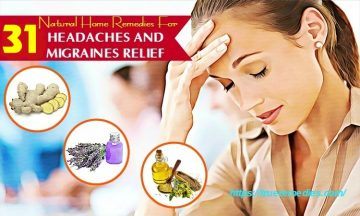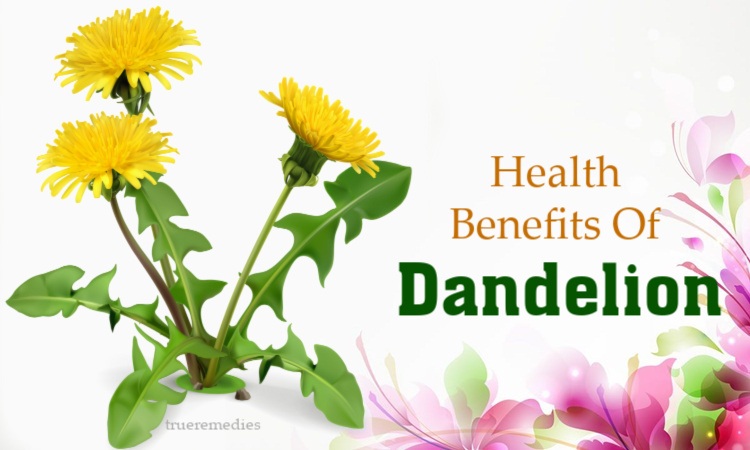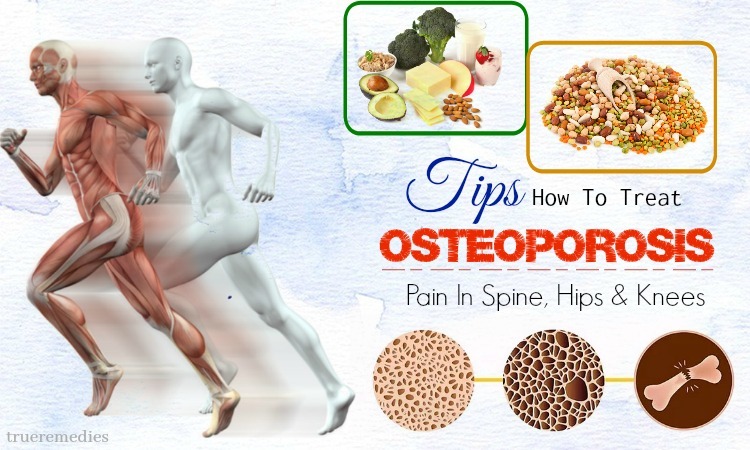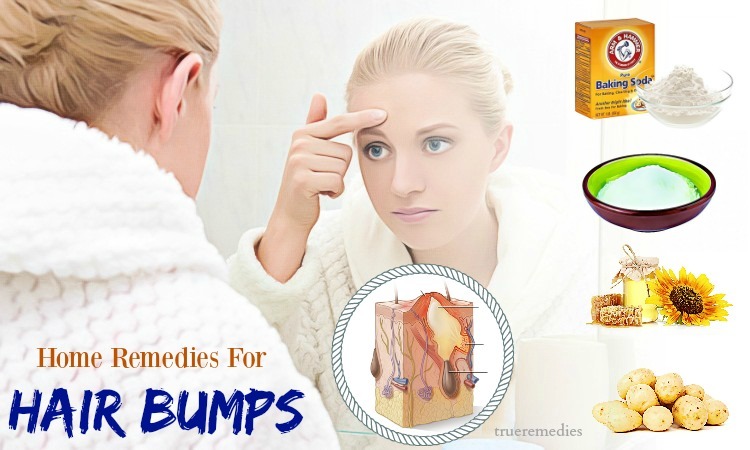updated: 05/30/2019
CONTENTS
Headache is one of the most common diseases that most people experience some times in their life. It can affect anyone regardless of age, gender and race. In most cases, the headache goes away on its own and is not seen as a serious disease to many people. However, it might be much more complicated than you thought and it is still becoming a popular concern nowadays. Chronic headache and migraines may make you unable to attend school or work regularly. Frequent headaches can affect employment and relationship. There are millions of people who are struggling with headaches and migraines are looking for a natural alternative to medicine. In this article, we are going to show you some of the best natural home remedies for headaches and migraines relief.
- How to prevent a migraine attack from happening
- Home remedies for dizziness, fatigue & vertigo
- Home remedies for dementia symptom treatment
What Is Headache?
Headache is the symptom of pain located in the neck or head which is usually above the eyes or the ears, at the temples or at the base of the skull. The International Headache Society (IHS) classifies headaches into primary headaches and secondary headaches. Primary headaches are stand-alone illness or benign and not accompanied by other diseases. Tension-type headaches and migraines are the most common types of primary headaches. On the contrary, secondary headaches are caused due to an underlying disease such as an infection, vascular disorders, head injury, brain bleed or tumors. The associated conditions may be minor or major. In fact, there are about 150 different types of headaches but the most common ones are as follow[1]:
Primary headaches:
- Tension headache: A tension headache, also called stress headache, is a dull, mild to moderate pain in your head and neck which is often described as a tight band around your head. This is the most common type of primary headache. It affects 21.8% of the population (about 1.6 billion people). It is more common among women than men and about 90 percentages of adults suffer from this.
- Migraines: A migraine is a moderate or severe painful headache with throbbing usually on just one side of the head. Migraine headache is the second most common type of primary headache. Both adults and children have this type of disease.
- Mixed headache: Mixed headache, also called transformed migraines, is the mixture of syndromes between tension and migraine headaches.
- Cluster headache: Cluster headache, also known as histamine headache, is a series of relatively short but extraordinary pain on one side of the head, usually around the eye. Cluster headache is a recurrent pain occurring mainly in men. Although it is rare, it is an important type of primary headache. Cluster headache might start in childhood but the average age of sufferers is 28 to 30. Cluster headaches can be prevented with ergotamine, prednisone, or lithium and treated with triptans.
Secondary headaches:
- Sinus headache: Sinus headache, also known as a sinus infection or rhinosinusitis, is a headache deriving from congestion or infection in the paranasal sinuses. It is a deep and constant pain within the bones of the face such as cheekbones, forehead, and bridge of your nose.
- Acute headache: Acute headache is one type of headache resulting from stress, lack of sleep, menstruation, food, medical problems, head injury, and so on. The pain begins suddenly and becomes worse quickly.
- Hormonal headache: Hormonal headache is a pain caused by the change of fluctuating hormone levels during the menstrual cycle, pregnancy, menopause or using of birth control pills. This syndrome happens in women only.
- Chronic progressive headache: Chronic progressive headache, also called traction or inflammatory headache, is a pain arising from illness or disorder of the brain and skull.
Common Causes Of Headaches
There is a wide variety of different factors causing headaches and migraines. Major contributing factors may include:
TrueRemedies Partner Solutions

Need a Help from the Leading Expert Online, Available 24/7?
They’re all here and ready to answer your questions online or by phone. Keep asking questions until you get the answer you need.
- Irritated structures surrounding the brain such as the face, neck, and skull.
- Respiratory illness.
- Contraction of the muscles covering the skull.
- Brain breeding.
- Brain tumor.
- Brain freeze.
- Alcohol.
- Blood clots, blood vessel constriction.
- Bruxism (teeth grinding at night).
- Cold or flu.
- Fatigue.
- Stroke.
- Poor posture.
- Poisoning of carbon monoxide.
- Concussion.
- A sudden surge of overwhelming anxiety and fear (panic attack).
- Dehydration.
- Glaucoma.
- Gas in the stomach.
- Inadequate sleep.
- Sinusitis.
- Harmful surrounding environment: secondhand tobacco smoke, physical stress, pollution, noise, lightning, weather change, and so on.
- Nutrient deficiencies (especially magnesium and vitamin B).
- The effects of medications
- Viral infections
- The effects of recreational drugs
- Head injury
- Gastrointestinal disorders such as celiac disease, irritable bowel syndrome, non-celiac gluten sensitivity, inflammatory bowel disease, and gastroparesis
Symptoms Of Headaches
Primary headaches:
Tension headache: Tension headache is categorized into the episodic and chronic phase. You may experience from these following signs:
- Slow head pain on both sides.
- Tightness across your forehead or around your head.
- Tenderness around scalp, neck, and shoulder.
Migraines: Migraine usually begins in childhood or adolescence and may contain four stages: prodrome, aura, attack, and post-drome.
- Prodrome appears one or two days before a migraine with these signs: diarrhea or constipation, mood changes, food craving, neck stiffness, frequent yawning, increase in thirst and urination.
- Aura is the symptom of the nervous system that can happen before or during migraine headache. Most people do not suffer from this when they have migraines. The typical signals of the aura are vision changes, vision loss, the sensation of needles on one arm or leg, numbness in the face or one side of the body, difficulties in speech, hearing noises, uncontrollable movements.
- Attack of migraines may last up to 72 hours if the headache is not treated. During this period you may suffer from pain on the head (one side or both sides), light and sound sensitivity, blurred vision, nausea, throbbing pain.
- Post-drome is the final stage that occurs after an attack. Examples of post-drome may be composed of confusion, moody and dizzy syndromes, drain, photophobia and phonophobia (sensitivity to light and sound), and weakness.
You might not experience all of the above stages.
Cluster headache: Cluster headache can be triggered at any time of the day. This cyclical headache happens at the same time every day. If you are a victim of cluster headache, you may have these symptoms as below:
- One-sided pain (usually behind one eye).
- Stuffy nose.
- Droopy lid, small pupil and swelling eyes.
- Red and watery eyes.
- Swollen forehead.
- Tender scalp.
- Restless.
- Sweating face.
Secondary headaches: Most secondary headaches reveal themselves through obvious clues and symptoms. The symptoms of different types of secondary headaches may vary a little but still share similarities. Let’s have a look at basic warning signs of secondary headaches as below:
- Abrupt pain without any build-up.
- The headache begins at unusual ages (over 50 or under 5 years old).
- Waking up the pain.
- Painful jaw, neck or face.
- Syncope.
- Dizziness.
- Difficult sleep.
- Altered conscious level such as memory loss, personality change.
- Limb weakness.
- Numb and tingling arms, hands or neck.
- Seizures.
- Confusion.
- Abnormal neurological symptoms.
- Visual disturbance.
- Difficulties in speaking and hearing.
- Fever, rash.
- Neck stiffness.
- Vomiting.
- Appetite loss and indigestion.
- Presence of cancer, HIV, pregnancy, glaucoma, temporomandibular joint, optic neuritis, low blood sugar, refraction errors, etc…
When To See A Doctor?
As always, the best source for advice on treating your headaches and migraines is your own headache specialist. A doctor will often be able to diagnose what type of headache you have. Because headache may be a symptom of serious disease, consult medical advice if you experience these warning signs:
- Swelling and drooping eyes.
- Red and watering eyes.
- Smaller pupil in the eye.
- Running and congested nose.
- Stiff neck.
- Vomiting and fever.
- Red and warm face.
- Discomfort and mild burning.
- Excessive sweating.
- The weakness of muscles.
- Short breath.
- Convulsion.
- Conscious change.
- Visional changes.
- Persistent, more severed and more regular pain.
Once your headache is diagnosed, you can get the right treatment to your symptoms.
Top 31 Home Remedies For Headaches And Migraines Relief
1. Ginger
Ginger, also called Zingiber officinale, is known for centuries as a popular herb and spice for culinary purpose. Other than that, ginger root and simply ginger are an effective medicinal treatment for many diseases including headaches and migraines[2]. Ginger root is low in fat and sodium and cholesterol free. It is also rich in vitamin C, magnesium and potassium. The root is believed to be able to block prostaglandins that encourage muscle contraction.
Ginger also may help reduce vomiting and nausea, common symptoms related to severe headaches[3]. It may protect your stomach from the harmful impact of alcohol and strengthen heart pumping. With these beneficiaries, it acts as a mechanism to relieve pains from headaches. Instead of bearing painkillers, try ginger as a natural useful drug without the side effects[4] [5].
Method 1: Drinking ginger juice
- Take a fresh ginger and remove the ginger skin.
- Cleanse it carefully.
- Squeeze the fresh ginger.
- Put them all in a pan with two cups of water and make boiled.
- Let the water cool down.
- Drink the warm ginger juice.
- Repeat 2 to 3 times a day for best results.
Tip: If you do not have a fresh ginger, drink ginger tea instead.
Method 2: Anemopathy (steaming)
- Take a raw ginger and clean it thoroughly with water.
- Slice or crush it.
- Put in a pan and boil with water.
- Breathe in the steam during the process of boiling.
Note: You can replace raw ginger with dry ginger powder.
Method 3: Application of a ginger paste
- Add some dry ginger powder to warm water to form a paste.
- Apply this paste directly to your forehead.
- Close your eyes and rest for 30 minutes.
- Remove the ginger paste and wash with warm water.
- Reapply as needed.
2. Mint Juice
Mint is an aromatic plant of genus Mentha which has opposite leaves and small white, pink or purple verticillate flowers. Mint comes with menthol and menthone properties, which are believed to be a preventive treatment for headaches[6].
How to use:
- Take a handful of fresh mint leaves and wash them clearly with water.
- Put them all into a food processor with a little water to make a paste.
- Filter this poultice by a cloth to get fresh mint juice.
- Apply this mint juice directly to your forehead and temples.
- Leave it for at least thirty minutes.
- Wipe off it and wash with warm water.
- Follow these steps 2 to 3 times per day.
3. Peppermint
When it comes to home remedies for the treatment of headaches, peppermint is very famous. Peppermint, also known as mentha piperita, is an aromatic and perennial herb of the mint family with downy leaves and small white or purple flowers. It usually offers benefits to hair and skin care, improvement of memory loss, relief of stress and pain, fresh breath and toothpaste, a cure for respiratory diseases such as coughs, asthma, tuberculosis, colds, allergies and so on. Menthol, menthone, methyl acetate, menthofuran, isomenthone, limonene, b-pinene, a-pinene, germacrene-d, trans-sabinene hydrate, and pulegone are the primary components of peppermint oil which may alleviate headaches[7].
Its calming and soothing effects, along with cooling sensation play an important role in slowing down inflammation and rising temperature associated with headaches and easing headache pain especially tension headache[8] [9].
Method 1: Peppermint oil massage
- Take one tablespoon of peppermint oil.
- Massage thoroughly the oil onto your forehead, temples and the back of your jaw.
- Reapply as needed.
Method 2: Application of fresh peppermint leaves
- Take some fresh peppermint leaves and clean them with water.
- Crush the leaves and put the crushed leaves directly on your forehead.
- Let it rest for at least 15 minutes and remove.
- Follow the steps twice a week if needed.
Method 3: Fumigation (facial steaming)
- Prepare a pot of boiling water.
- Add a few drops of peppermint essential oil to the pot.
- Inhale the vapors deeply a few times.
- Repeat twice a week for best results
Note:
- Never use peppermint oil for infants, small children under 12 years old, pregnant and breastfeeding women.
- It should not be taken internally without guidance by the doctor.
- Stop using in case of allergic reactions.
4. Lavender Oil
Lavender, also known as Lavandula Angustifolia, is a Mediterranean aromatic plant of the mint family which has narrow grey-green leaves, small purple flowers, and strong, pleasant smell. Lavender oil is an essential oil obtained by distillation from flower spikes of certain species of lavender.
The oil has been used for medicinal and religious purposes for more than 2500 years. Several benefits of health might include reducing anxiety and stress, healing burns and wounds, slowing aging, improving sleep, fighting against acne, restoring skin complexion, ameliorating eczema and psoriasis, and easing the pain of headache and migraine. Thanks to its main compositions of a-pinene, trans-ocimene, linalool, limonene, lavandulyl acetate, linalyl acetate, cis-ocimene, octanone, terpinen-4-ol, cineole, camphor, lavender oil may bring a soothing and calming effect, relieving tension, panic, hysteria, depression, and exhausted nerves[10]. All of these things are extremely good for stopping headache pain.
According to a study in the European Journal of Neurology, people with migraine headaches saw a considerable minimization of the pain after fifteen minute-lavender inhalation[11].
Method 1: Massage
Lavender oil
- Take a few drops of lavender oil and put it into your palm
- Create frictions up and down between two hands to make the oil warm.
- Apply the oil directly to your forehead, temples, and back of your neck.
- Massage for at least 5 minutes.
- Reapply when needed.
Mixture of oils
What you need:
- 3 drops of lavender oil.
- 3 drops of peppermint oil.
- 3 drops of marjoram oil.
- 3 drops of coconut oil.
Do as below:
- Blend all of the above essential oils well.
- Massage gently and thoroughly on your shoulder, neck, temples, and forehead.
- After fifteen minutes, close your eyes and relax.
- Re-apply once a week as needed.
Oil mixture for applying on temples
What you need:
- One drop of lavender oil.
- One drop of rose oil.
- One drop of melissa oil.
Do as below:
- Make a mixture of three oils.
- Warm the oil before massaging.
- Rub the oil gently into your temples and relax.
- Perform again twice a week if needed.
Method 2: Steam inhalation
Lavender oil
- Boil two to three cups of water.
- Add two to four drops of essential lavender oil to the boiling water.
- Deeply breathe in the steam.
- Perform again if needed.
Lavender oil and peppermint oil
What you need:
- 2 drops of lavender oil.
- 2 drops of peppermint oil.
Do as below:
- Add the lavender oil and peppermint oil to boiling water.
- Inhale deeply the vapors.
- Redo once a week for better results.
Tip: You can inhale oils directly from a tissue or a portable inhaler (less effective).
Note:
- Do not use lavender oil for infants, small children under 12 years old, pregnant and breastfeeding women.
- Lavender oil is not for internal use.
- Don’t use in case you are allergic to lavender oil.
5. Mustard Oil
Mustard oil has healing properties for many diseases including headaches. It is composed of stimulation, anti-fungus, anti-inflammation, antibacterial agents, which are good at stimulating blood circulation and comforting stiff muscles. It serves as a tonic that may help in boosting the immune system, warming up the respiratory system and strengthening the weak body. Thanks to all powerful characteristics, regular consumption of mustard oil may help you deal with headaches and migraines[12] [13].
- Make warm 5 to 7 tablespoons of mustard oil.
- Apply the warm mustard oil to your forehead, scalp, and neck.
- Massage gently for at least five minutes.
- Wash the oil with warm water.
- Do it again 2 to 3 times per week for better results.
Note:
- You should not use mustard oil for infants, small children under 12 years old, pregnant and breastfeeding women.
- Avoid applying the oil directly to cuts, bruises and burning injured areas.
- It can be used both internally and externally.
- Do not continue to use mustard oil in case of an allergic reaction.
6. Basil
Basil has amazing advantages in treating diseases such as fevers, coughs, sore throat, respiratory disorder, kidney stones, heart problems, mouth infections, insect bites, skin disorder, and many more [14] [15]. It may also support your efforts in cutting down pain from headaches and migraines[16]. It can also be served as a muscle relaxant which is especially useful for tension and tight muscles. In addition, its analgesic, anti-microbial, and antioxidant properties support in releasing pain from headache and migraines.
Method 1: Basil leaves
First way:
- Take some fresh basil leaves and cleanse them with water.
- Boil the leaves in 500ml of water.
- Cook until half of the liquid remains.
- Inhale deeply the steam.
Note: You can basil powder or dried basil leaves instead of fresh ones (less effective).
Second way:
- Crush some clean raw basil leaves to make a paste.
- Apply this poultice directly to your forehead.
- Leave it for at least 15 minutes.
- Take off the poultice and clean with lukewarm water.
- Do it again two times per week.
Method 2: Basil oil
- Add four to five drops of essential basil oil in your palm.
- Rub and manipulate gently and thoroughly on your forehead, temples, neck, and shoulders.
- Follow the process again twice per week as needed.
Note: You can warm the basil oil before massaging.
7. Cayenne
Cayenne, also known as the Guinea spice, cow horn pepper, red hot chili pepper, aleva, bird pepper or red pepper is still probably one of the most widely used herbal medicines for headache and migraine relief. The platelet aggregation of capsaicin in cayenne may overwhelm and desensitize your nerves to stop pain transmission[17]. Furthermore, it may equalize the blood circulation and thus release the pressure in your head. All of these benefits make it helpful for people who are suffering from headaches and migraines[18].
- Add ¼ teaspoon of cayenne powder in 120ml of warm water.
- Stir them around to form a paste.
- Immerse a cotton pad in the solution to make it fully coated.
- Put the moist cotton inside your nostrils.
- Remove the cotton when you feel the heat of cayenne.
- Breathe deeply and let the mixture burn.
- Sit down and relax.
- Reapply when needed.
Note:
- Excessive use of cayenne may lead to stomachache, liver and kidney damage.
- Avoid using cayenne when you are taking an asthma medicine, aspirin, and drugs for blood thinning.
- Do not use cayenne for children, pregnant and nursing women, people with ulcers and heart problems.
8. Almond
Almond is used as a wonderful natural treatment for many diseases including headaches and migraines. If you are one of the people who are afraid of the side effects of drugs and is looking for another natural alternative, almond may just be that natural cure you are searching for.
Almond is rich in biotin, vitamin E, manganese, copper, vitamin B2, phosphorus, magnesium, molybdenum, fiber, and salicin. This salicin in almond actively acts as a pain reliever, especially for tension headaches[19] [20]. Moreover, the magnesium and vitamin B2 in it may assist in lowering blood pressure levels.
Researchers said that consuming 10 – 12 almonds is the equivalent of two aspirin for a migraine headache.
- Take 300 grams of wholesome sweet almond.
- Ground them into a powder.
- Add some almond powder in lukewarm water and stir well.
- Add some fresh milk or sugar (optional) to make a more delicious drink.
- Gradually drain dry a glass of almond juice.
- Do this once a day.
Note: You can eat ten to twelve wholesome almond nuts daily or massage with sweet almond oil instead of using almond powder.
9. Cold Compress
Cold therapy for relieving headaches and migraines was first found in 1849. Ice may be an active contributor which severely lessens the pain and recurrence of migraines and headaches through the vascular, neurologic or endocrine system[21] [22].
- Prepare an ice pack with ice cubes.
- Place the ice pack on your forehead for some minutes.
- Remove it for 30 seconds, then place once again.
- Redo the process for a couple of times per day.
Note: Cotton pads soaked with cold water can be a replacement.
10. Cabbage
Cabbage or headed cabbage, a leafy plant, is a vegetable that is widely used in many kitchens. Surprisingly, cabbage has a lot of miracle healthy benefits in treating headaches, skin disorders, gout, rheumatism, Alzheimer’s, stomach ulcers and more. It may also treat headaches and migraines[23] [24].
Cabbage leaves are known to be a rich source of magnesium, mustard oil, sulfur heterosides, sinigrin rapine, and oxalate. All the ingredients show an apparent effect in dilating capillaries and increasing blood flow that helps fight against pain caused by a headache or a migraine.
- Cleanse some cabbage leaves with water.
- Extract them to get fresh cabbage juice.
- Put a cloth in the juice to make it wet.
- Tie this cloth around your forehead as a bandage.
- Leave it overnight.
- Repeat daily until your pain is gone.
11. Rosemary
Rosemary or Rosmarinus officinalis has analgesic and anti-inflammatory properties that have been known for hundreds of years as a stress and pain removal[25] [26]. It is also excellent in improving blood and oxygen circulation which successfully aids for headaches and migraines[27] induced by abnormal blood pressure.
Method 1: Massage
- Put 8 to 10 drops of rosemary oil in your palm.
- Rub your hands to make the oil lukewarm.
- Massage gently into the affected area for five minutes.
- Re-apply twice a week.
Method 2: Inhalation
- Add five drops of essential rosemary oil to a bowl of hot water.
- Breathe in the steam for 5 to 6 minutes.
- Redo two times per week as needed.
Note: You can use dried rosemary as an alternative for rosemary oil.
Method 3: Rosemary tea
- Prepare a rosemary tea bag and two cups of boiling water.
- Steep rosemary tea bag into boiling water for eight minutes.
- Drink it warm or with some ice.
Note: You can use fresh sprigs of rosemary to make tea.
12. Clove
Clove, just like many other herbs, offers multiple health benefits such as digestion, cancer, liver problems, immune system’s enhancement, bone preservation, diabetes control, oral diseases, headaches and migraines[28]. According to the National Nutrient Database for Standard Reference, the nutrients of 100 grams of cloves include 274 kcal of energy, 65g of carbohydrate, 2g of sugars, 33g of dietary fiber, 6g of protein, and 13g of total lipids. Moreover, it is rich in minerals and vitamins such as calcium, hydrochloric acid, magnesium, iron, phosphorous, potassium, vitamin C, vitamin A, vitamin B6 & B12, vitamin E, etc… Along with these powerful ingredients, cloves and its flavonoids may assist in easing inflammation or tension, lessening muscle tense, and deadening pain from headaches and migraines[29].
Method 1: Clove poultice
- Prepare some fresh clove leaves and wash with water.
- Grind the leaves to make a paste.
- Use a cloth or bandage to cover this poultice around your forehead.
- Let it rest for at least 15 minutes.
- Take off the bandage and wash with lukewarm water.
- Do it daily until your pain is gone.
Method 2: Massage
- Warm some clove oil with a little salt.
- Add 5 drops of clove oil into your palm.
- Massage gently around your forehead, temples, and neck.
- Redo it two to three times per week.
13. Apple
As you may know, an old Welsh proverb said that an apple a day keeps the doctor away. So we can see that apple shows sufficient evidence for treating diseases such as oral care, prevention for Alzheimer’s and Parkinson diseases, cancer, diabetes, heart and liver diseases, gallstones, and even headaches and migraines[30].
This fruit deserves to be called the nutritional powerhouse because of its vitamin C, B-complex vitamins, dietary fiber, phytonutrients, minerals including calcium, potassium, and phosphorous. As a headache and migraine relief, apple cider vinegar helps by fixing the root cause of the pain.
Method 1: Apple cider vinegar
- Mix ¼ cup of apple cider vinegar and 3 cups of water.
- Boil the mixture.
- Inhale the steam for at least 5 minutes.
- Follow the steps whenever you have a headache.
Method 2: Apple cider vinegar with honey
- Add one tablespoon each of apple cider vinegar and honey in a glass of lukewarm water.
- Mix them well and drink the water.
- Repeat 2 to 3 times a day.
Note:
- You can use lemon juice instead of apple cider vinegar.
- Consult a doctor before using it for people with diabetes, pregnant and nursing women.
- Do not consume apple cider vinegar without diluting.
14. Banana
Banana contains 68% water, 25% sugar, 2% protein, 1% fat and 1% cellulose fibers. It also provides many important nutrients such as vitamin A, B6, C and is high in magnesium and potassium content which is necessary for controlling headaches and migraines by lessening the intensity of the tension, reducing blood pressure and providing a natural cooling effect and powering our brain. A banana a day will help you to fight off your constant headaches[31].
- Rub a few drops of eucalyptus oil on your forehead.
- Place a banana peel on the same area with the oil. Be sure the inner part of the peel to rest on your forehead.
- Lie down, breathe deeply, relax and leave it for about 20 to 30 minutes.
- Perform the process again twice a week.
15. Cinnamon
It is a pity if you do not know that cinnamon has been prized for its medicinal purposes for years[32]. It may act as an aspirin or acetylsalicylic acid to ease muscle tension and give relief from headaches and migraines, especially headaches caused by cold air.
- Grind some dried cinnamon to make a powder.
- Add this cinnamon powder in some water to make a paste.
- Use a bandage to tie this paste directly on your forehead.
- Let it burn for at least 15 minutes.
- Remove this paste, wash with lukewarm water and relax.
- Perform again if needed.
Note: You can combine the cinnamon powder with honey to make a drink.
16. Butterbur
According to researchers, people who use 75 milligrams of butterbur twice a day, headache frequency may decrease by 68 %. Butterbur is high in substances with powerful medicinal properties such as petasin and isopetasin which may help reduce spasms and inflammation of headaches[33] [34].
- Drink 75mg of extract from butterbur root.
- Do it twice per day for 16 weeks.
Note:
- Do not use butterbur for pregnant or nursing women, people with liver and heart diseases.
- Butterbur should not be used with borage, gravel root and ragwort.
- Stop using it if you are allergic to any plants of the Petasites hybridus or Compositae family.
17. Flaxseed
Flaxseed is the small seed of flax plant that is particularly used as a source of oil. Additionally, the oil from flaxseed may have beneficial effects on curing many diseases[35] [36]. Flaxseed oil may be effective for providing relief for headaches and migraines[37]. The oil is composed of a wide range of useful properties such as omega 3 fatty acids, lignans, fiber, and anti-inflammatory, which can protect cells, control brain function, and slow down pain from headaches.
- Add four to five drops of flaxseed oil into your palm.
- Rub the oil gently on your forehead, temples, and neck.
- Massage for at least fifteen minutes.
- Perform again as needed.
Note:
- Flaxseed oil should not be eaten or put on an open wound.
- Flaxseed oil should not be used for people with diarrhea, bowel diseases, diabetes, and pregnant and breastfeeding women
18. Buckwheat
Buckwheat, also called Fagopyrum esculentum, has achieved its popularity as a natural remedy for headaches and migraines relief for centuries[38] [39]. Buckwheat may be protective against headaches and migraines thanks to its phytochemicals like flavonoids that have antioxidant and anti-inflammatory properties.
What you need to do is:
- Consume a dosage of 50 to 75 mg of standardized butterbur extract.
- Use twice daily for 3 to 4 months.
19. Feverfew
You may be astonished that feverfew may be used as a natural remedy for headaches and migraines. As you know, one of the leading causes of headaches is blood vessel constriction. Feverfew contains parthenolide – an active ingredient for blocking blood vessel constriction. Thus, it will get rid of your discomfort from headaches and migraines[40].
- Pick the fresh leaves and wash clearly with water.
- Eat directly 3 to 4 fresh leaves each day.
Or you can lessen the bitter of the leaves by:
- Put in salad or sandwich.
- Add some honey or sugar.
Note: If you are not good at tasting bitter of feverfew fresh leaves, use dried leaves or 250 milligrams of freeze-dried capsules of feverfew per day instead.
20. Fish Oil
Fish oil is the oil extracted from fish. It has numerous health benefits including headaches and migraines. It consists of omega 3 fatty acid and anti-inflammation that may help avoid constriction of the blood vessels and subsequences of actions in the head leading to headaches and migraines[41] [42].
- Take 10,000 mg of fish oil.
- Use it in divided doses daily.
- Or you can eat two fish meals a week (about 230 grams per meal).
Note:
- Do not use fish oil for children, pregnant women, people who are allergic to fish or seafood, people with weak immune systems and implanted defibrillators.
- Fish oil cannot be used with birth control pills and drugs for blood thinner, blood pressure, and cholesterol.
21. Hot Shower
Most of us have the habit of showering at least one time per day. So instead of bathing with cool water, we use hot water as a helpful remedy for headache. People who are having tension headaches may try comforting hot shower to lessen muscle tension and get rid of the pain of headaches[43].
- Prepare hot water.
- Take a bath by standing under a hot shower for at least 20 minutes.
- Do it once a day to ease the pain.
Preventative Remedies
To lessen the symptoms of headaches and migraines, apart from finding a possible natural effective cure, you should pay attention to the other following useful methods:
- Try acupuncture.
- Massage your scalp.
- Practice yoga to increase relaxation: physical postures, breathing exercises and meditation.
- Release stress. Get enough sleep.
- Avoid caffeine, alcohol drinks and chocolate.
- Eat breakfast and schedule regular meals to maintain stable blood sugar.
- Supply enough magnesium, potassium, vitamin B2, Co-enzyme Q10 because both of them are two crucial minerals for an overall good healthy body.
- Avoid MSG (Monosodium Glutamate). Monosodium glutamate (MSG) is a substance added to food to boost its favor.
- Drink enough water.
With all these above helpful home remedies for headaches, you are now able to reduce headaches and migraines by yourself at home. There are plenty of options for you to make a choice and they all work extremely well. Do you know any other home remedies for headaches and migraines. Please feel free to share with us by leaving your comments in the box below.













